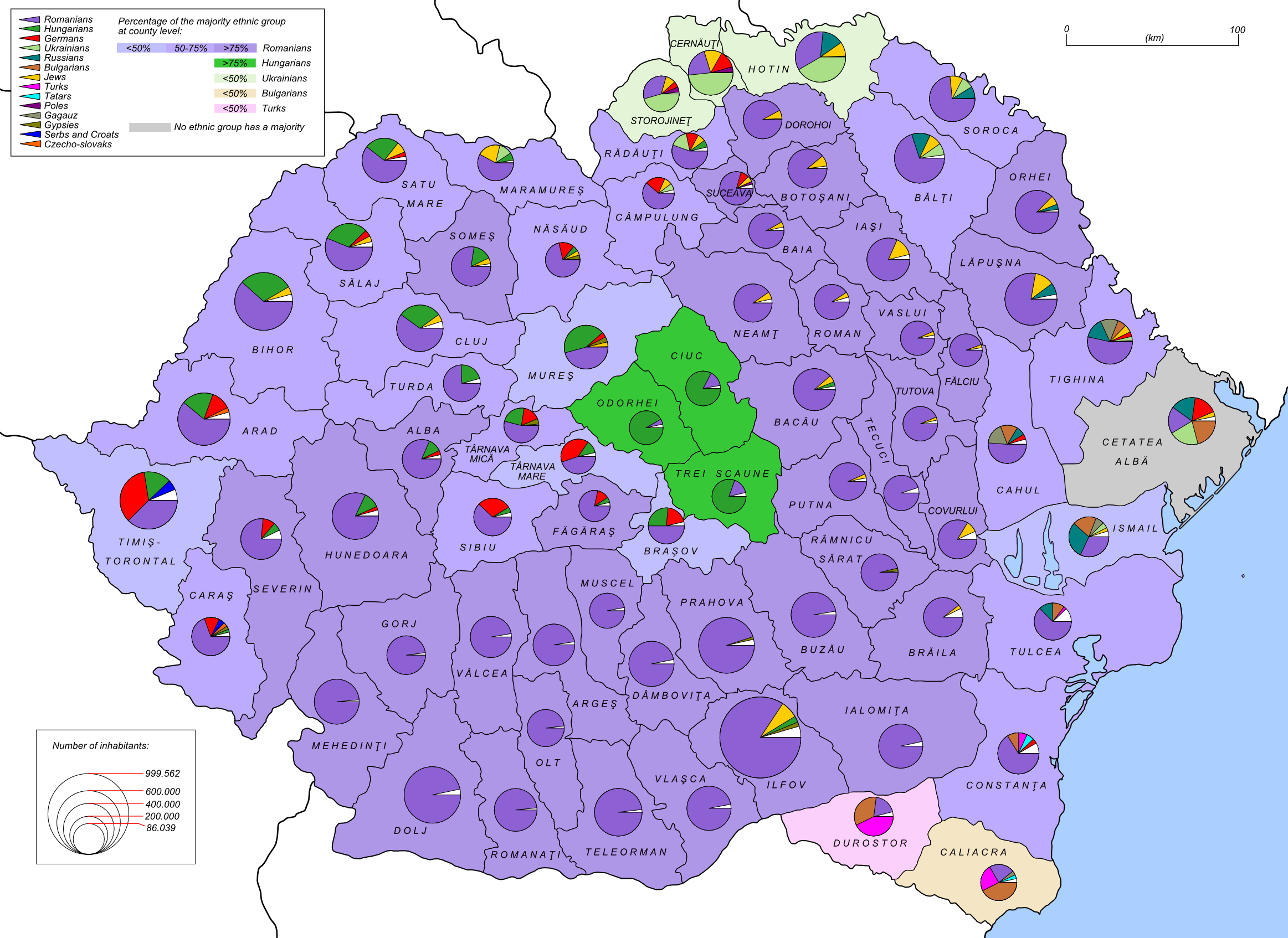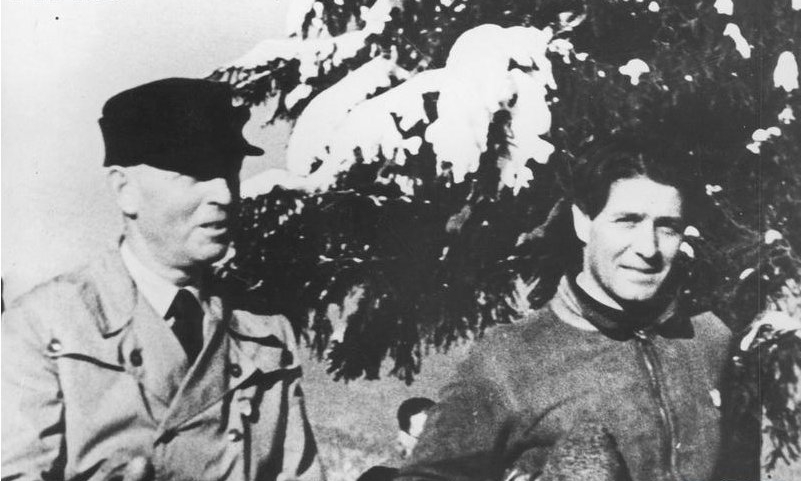|
Tămădău Affair
The Tămădău affair (, ''Înscenarea de la Tămădău'' – "the Tămădău frameup" – or ''Fuga de la Tămădău'' – "the Tămădău flight") was an incident that took place in Romania in July 1947. It was the source of a political scandal and show trial. It was provoked when an important number of National Peasants' Party (PNȚ) leaders, including Party Vice-President Ion Mihalache, had been offered a chance to flee Romania, where the Romanian Communist Party, Communist Party (PCR), the main force in the Petru Groza government, already had a tight grip on power with backing from the Soviet Union (see Soviet occupation of Romania). The affair signalled some of the first official measures taken against opposition parties as a step leading to the proclamation of a people's republic at the end of that year (see Socialist Republic of Romania). Background The PCR victory in the 1946 Romanian general election, 1946 general election was achieved mostly through the implementation o ... [...More Info...] [...Related Items...] OR: [Wikipedia] [Google] [Baidu] |
National Liberal Party (Romania, 1875)
The National Liberal Party (, PNL) was the first organised political party in Romania, a major force in the country's politics from its foundation in 1875 to World War II. Established in order to represent the interests of the nascent local bourgeoisie, until World War I it contested power with the Conservative Party (Romania, 1880–1918), Conservative Party, supported primarily by Boyars of Wallachia and Moldavia#Modern Romania, wealthy landowners, effectively creating a two-party system in a political system which severely limited the representation of the peasant majority through census suffrage. Unlike its major opponent, the PNL managed to preserve its prominence after the implementation of universal suffrage, universal male suffrage, playing an important role in shaping the institutional framework of ''Greater Romania'' during the 1920s. History Dominated throughout its existence by the Brătianu family, the party was periodically affected by strong factionalism. Am ... [...More Info...] [...Related Items...] OR: [Wikipedia] [Google] [Baidu] |
Teohari Georgescu
Teohari Georgescu (January 31, 1908 – December 31, 1976) was a Romanian statesman and a high-ranking member of the Romanian Communist Party. Early life Born in Chitila, near Bucharest, he was the third of seven children of Constantin and Aneta Georgescu. Georgescu, whose formal education ended after the fourth grade, began his career as an assistant in his father's store. In 1923, he was sent to the main printing house in Bucharest, Cartea Românească, to apprentice as a typesetter. Three years later, his father now dead, he joined the Gutenberg printers' union and secretly began to read Communist leaflets. He soon joined the Communist party, then illegal. Underground activity Georgescu became a member of the party's Central Committee and its secretariat, participating in secret meetings, organising strikes, and spreading leaflets. Siguranța Statului, the Kingdom of Romania's secret services, began to keep an eye on him, and he was first arrested in 1933 for authoring l ... [...More Info...] [...Related Items...] OR: [Wikipedia] [Google] [Baidu] |
Ministry Of Internal Affairs (Romania)
The Ministry of Internal Affairs of Romania () is one of the eighteen ministries of the Government of Romania. From 23 August 1944 to 18 March 1975 the ministry held the title of ''Minister of Internal Affairs'', between 2004 and 2007, held the title of ''Minister of Administration and Interior'', and since April 2007, ''Minister of Interior and Administrative Reform''. In December 2008, the Boc government changed the name back to ''Ministry of Administration and Interior''. Until 2006, the ministry was housed near Lipscani in ''Palatul Vama Poştei'', built between 1914 and 1926 according to the architect Statie Ciortan's plans. In 2006 the ministry moved into the former building of the Senate on Revolution Square. Subordinated structures Within Romania, the following structures are subordinated to the Ministry of Internal Affairs: * Romanian Police * Romanian Gendarmerie * Romanian Border Police * General Inspectorate for Emergency Situations * General Inspectorate fo ... [...More Info...] [...Related Items...] OR: [Wikipedia] [Google] [Baidu] |
Victor Eftimiu
Victor Eftimiu (; 24 January 1889 – 27 November 1972) was a Romanian poet and playwright. He was a contributor to ''Sburătorul'', a Romanian literary magazine. His works have been performed in the State Jewish Theater of Romania. Eftimiu was of Albanian origin, but also had Aromanian descent through his father Gheorghe Eftimiu, a merchant. Eftimiu's mother was Maria Eftimiu, née Cociu. Victor Eftimiu was born in Boboshticë near Korçë. In 1905, he emigrated from Albania to Romania, where he found work as a theatre manager in 1913. He published several books of poetry, and wrote comedies and satirical pieces for the theatre. He also wrote a volume of Romanian fairy tales, and several children's books. He wrote also criticisms and articles for numerous magazines. He died in 1972 and was buried at Bellu Cemetery. Eftimiu lived in a house next to the Cișmigiu Gardens, in central Bucharest. The street where the house is located is named after him; a , sculpted by D ... [...More Info...] [...Related Items...] OR: [Wikipedia] [Google] [Baidu] |
Nicolae L
{{disambig ...
Nicolae may refer to: * Nicolae (name), an Aromanian and Romanian name * ''Nicolae'' (novel), a 1997 novel See also *Nicolai (other) *Nicolao Nicolao is an Italian given name and a surname. It may refer to the following: Given name *Nicolao Civitali (1482 – after 1560), Italian sculptor and architect *Nicolao Colletti (18th century), Italian mathematician *Nicolao Dorati (c. 1513 – 1 ... [...More Info...] [...Related Items...] OR: [Wikipedia] [Google] [Baidu] |
United Nations
The United Nations (UN) is the Earth, global intergovernmental organization established by the signing of the Charter of the United Nations, UN Charter on 26 June 1945 with the stated purpose of maintaining international peace and international security, security, to develop friendly Diplomacy, relations among State (polity), states, to promote international cooperation, and to serve as a centre for harmonizing the actions of states in achieving those goals. The United Nations headquarters is located in New York City, with several other offices located in United Nations Office at Geneva, Geneva, United Nations Office at Nairobi, Nairobi, United Nations Office at Vienna, Vienna, and The Hague. The UN comprises six principal organizations: the United Nations General Assembly, General Assembly, the United Nations Security Council, Security Council, the United Nations Economic and Social Council, Economic and Social Council, the International Court of Justice, the United Nations Se ... [...More Info...] [...Related Items...] OR: [Wikipedia] [Google] [Baidu] |
Secretary-General Of The United Nations
The secretary-general of the United Nations (UNSG or UNSECGEN) is the chief administrative officer of the United Nations and head of the United Nations Secretariat, one of the United Nations System#Six principal organs, six principal organs of the United Nations. The role of the secretary-general and of the secretariat is laid out by Chapter XV of the United Nations Charter, Chapter XV (Articles 97 to 101) of the United Nations Charter. However, the office's qualifications, selection process and tenure are open to interpretation; they have been established by custom. Selection and term of office The secretary-general is appointed by the United Nations General Assembly, General Assembly upon the recommendation of the United Nations Security Council, Security Council. As the recommendation must come from the Security Council, any of the five United Nations Security Council veto power, permanent members of the council can veto a nomination. Most secretaries-general are compromi ... [...More Info...] [...Related Items...] OR: [Wikipedia] [Google] [Baidu] |
Romania During World War II
The Kingdom of Romania, under the rule of King Carol II of Romania, King Carol II, initially maintained Neutral country, neutrality in World War II. However, fascist political forces, especially the Iron Guard, rose in popularity and power, urging an alliance with Nazi Germany and its Axis powers, allies. As the military fortunes of Romania's two main guarantors of territorial integrity—French Third Republic, France and United Kingdom, Britain—crumbled in the Battle of France, the government of Romania turned to Germany in hopes of a similar guarantee, unaware that Germany, in Molotov–Ribbentrop Pact#Secret protocol, the supplementary protocol to the 1939 Molotov–Ribbentrop Pact, had already granted its blessing to Soviet Union, Soviet claims on Bessarabia, Romanian territory. In the summer of 1940, the USSR Soviet occupation of Bessarabia and Northern Bukovina, occupied Bessarabia and Northern Bukovina, severely weakening Romania and diminishing its international standin ... [...More Info...] [...Related Items...] OR: [Wikipedia] [Google] [Baidu] |
Allies Of World War II
The Allies, formally referred to as the United Nations from 1942, were an international Coalition#Military, military coalition formed during World War II (1939–1945) to oppose the Axis powers. Its principal members were the "Four Policemen, Big Four" – the United Kingdom, United States, Soviet Union, and Republic of China (1912–1949), China. Membership in the Allies varied during the course of the war. When the conflict broke out on 1 September 1939, the Allied coalition consisted of the United Kingdom, French Third Republic, France, and Second Polish Republic, Poland, as well as their respective Dependent territory, dependencies, such as British Raj, British India. They were joined by the independent dominions of the British Commonwealth: Canada, Australia, Dominion of New Zealand, New Zealand and Union of South Africa, South Africa. Consequently, the initial alliance resembled Allies of World War I, that of the First World War. As Axis forces began German invasion of ... [...More Info...] [...Related Items...] OR: [Wikipedia] [Google] [Baidu] |
Separate Peace
A separate peace is a nation's agreement to cease military hostilities with another even though the former country had previously entered into a military alliance with other states that remain at war with the latter country. For example, at the start of the First World War, Russia was a member, like the United Kingdom and France, of the Triple Entente, which went to war with the Central Powers formed by Germany and Austria-Hungary, later joined by the Ottoman Empire and Bulgaria. After the abdication of Nicholas II during the February Revolution and the subsequent Russian Provisional Government's overthrow by the Bolsheviks during the October Revolution, Russia defaulted on its commitments to the Triple Entente by signing a separate peace with Germany and its allies in 1917. This armistice was followed on March 3, 1918, by the formal signing of the Treaty of Brest-Litovsk. During the Second World War, after 1941, when the Soviets were allied with the British and the American ... [...More Info...] [...Related Items...] OR: [Wikipedia] [Google] [Baidu] |
Ion Antonescu
Ion Antonescu (; ; – 1 June 1946) was a Romanian military officer and Mareșal (Romania), marshal who presided over two successive Romania during World War II, wartime dictatorships as Prime Minister of Romania, Prime Minister and ''Conducător'' during most of World War II. Having been responsible for facilitating the Holocaust in Romania, he was overthrown in 1944, before being tried for war crimes and executed two years later in 1946. A Romanian Army career officer who made his name during the 1907 Romanian peasants' revolt, 1907 peasants' revolt and the Romania in World War I, World War I Romanian campaign, the antisemitic Antonescu sympathized with Far-right politics, far-right and Fascism, fascist politics. He was a military attaché to France and later Chief of the Romanian General Staff, Chief of the General Staff, briefly serving as Ministry of National Defense (Romania), Defence Minister in the National Christian cabinet of Octavian Goga as well as the subsequent F ... [...More Info...] [...Related Items...] OR: [Wikipedia] [Google] [Baidu] |







